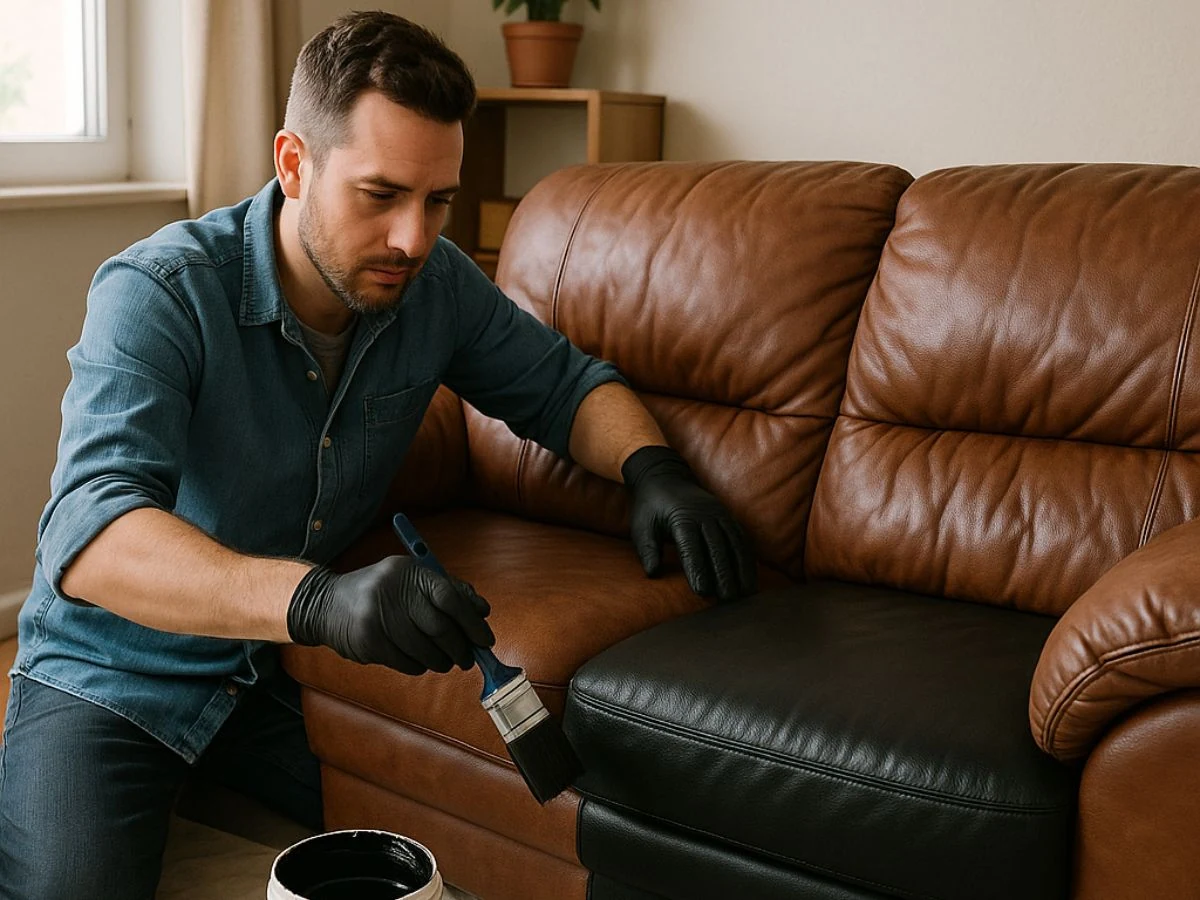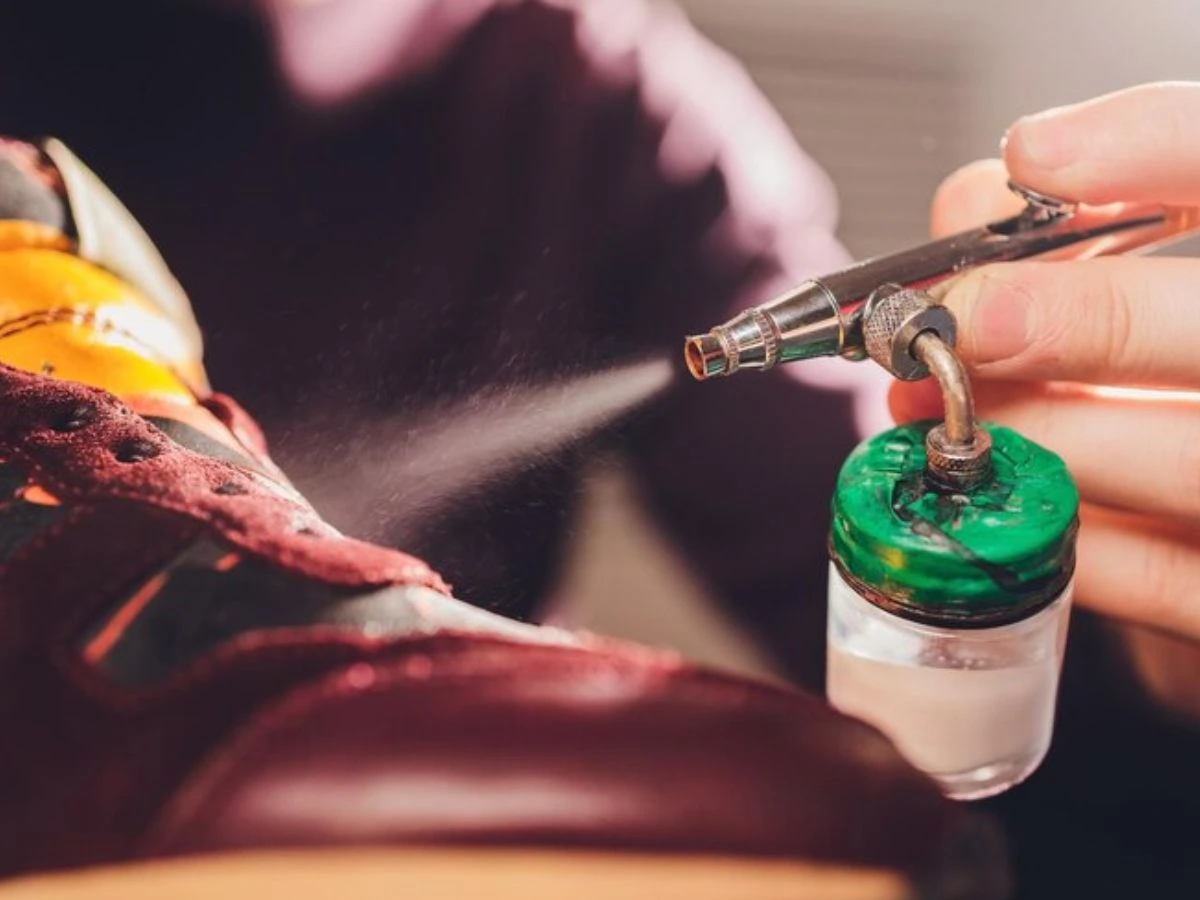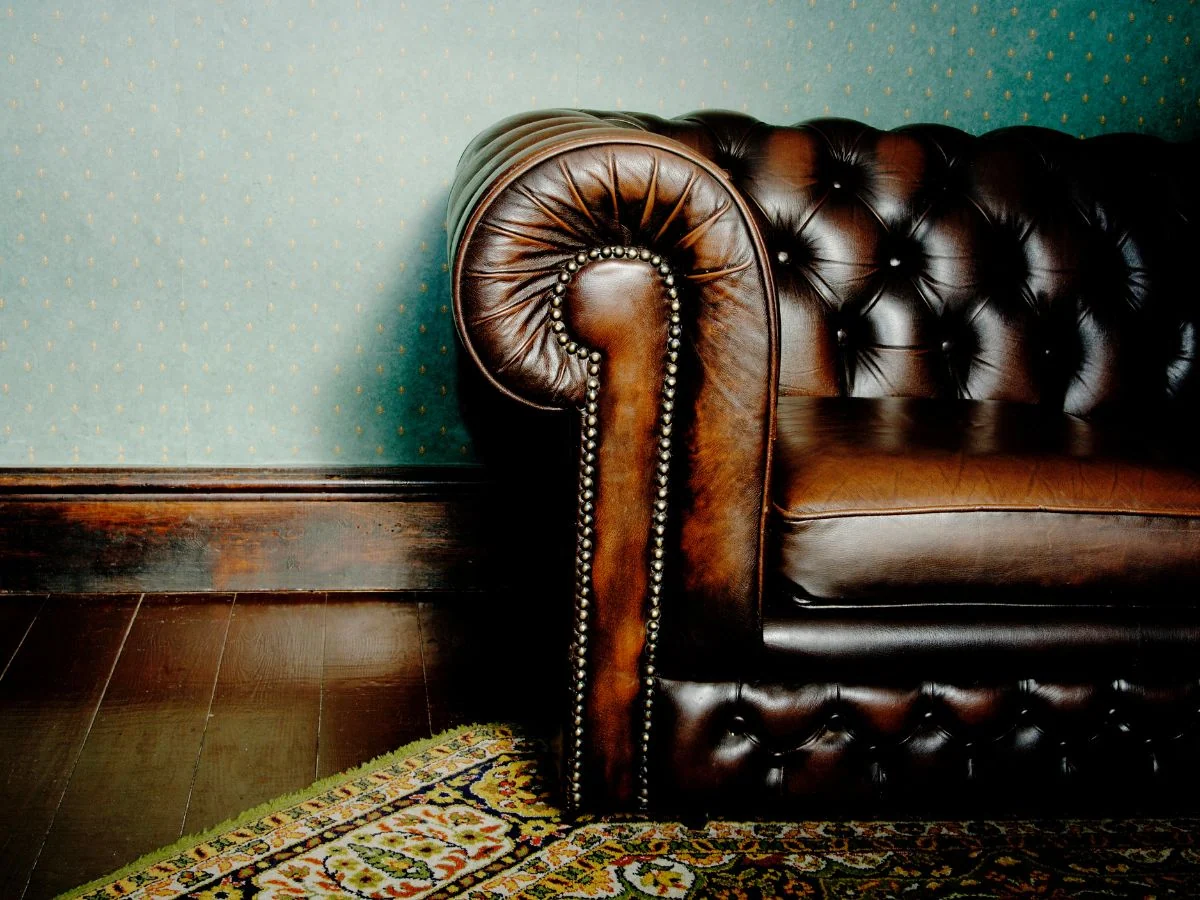How DIY Leather Couch Paint Can Damage Your Sofa
When your beloved leather sofa starts showing signs of wear-fading, scratches, or colour inconsistencies—it’s tempting to repair or paint your lather couch yourself. The online marketplace is flooded with products promising professional-quality results at a fraction of the cost. YouTube tutorials make the process look deceptively simple: clean, prep, paint, and voilà-a seemingly brand-new sofa.
But what these quick-fix videos don’t show are the potential disasters lurking beneath that fresh coat of paint on leather products . As leather restoration specialists with over three decades of experience, we’ve seen countless DIY leather painting attempts that have resulted in irreversible damage and costly repair , ultimately costing homeowners far more than professional services would have in the first place.
Before you commit to that leather paint kit, let’s explore why painting your leather couch often fails and the hidden risks to your valuable furniture. Many DIY kits promise to simplify the process of restoring leather to its original condition, but they often fall short of expectations.
Why DIY Leather Couch Paint Often Fails
Incorrect Product Selection
One of the most common pitfalls in DIY leather recolouring is choosing inappropriate products. Leather is a natural material with specific requirements, yet many homeowners select:
- Generic acrylic paints marketed for “all surfaces”
- Vinyl repair kits that aren’t formulated for genuine leather
- -Low-quality leather paints lacking proper flexibility agents
These incorrect products often contain harsh chemicals that can break down leather fibres over time. Professional leather technicians use specially formulated, eco-friendly colourants that penetrate the leather rather than merely coating the surface, ensuring both aesthetic appeal and material integrity, leading to a long lasting finish . High-quality leather colourant is often preferred for its superior adhesion, durability, and scratch resistant properties, especially in large recoloring projects.
Inadequate Surface Preparation
Proper preparation accounts for nearly 70% of a successful leather recolouring project. DIY attempts typically fall short in several critical areas:
- Insufficient cleaning to remove body oils and residues and remove dust
- Failure to properly deglaze the leather surface
- Skipping essential pH balancing steps
- Inadequate repair of cracks and damage before painting
Without these crucial preparation steps, even the highest quality leather paint will fail to adhere properly, leading to peeling, cracking, and uneven colour distribution within weeks or months.
Application Technique Problems
The application technique is where many DIY projects truly go awry. Common mistakes include:
- Applying too much product in a single coat
- Using improper tools like household paintbrushes
- Not using the right brush or paint brush for detailed work and even coverage; sponges are also a popular choice for applying leather paint because they help create a smooth finish
- Failing to account for leather’s natural stretch and movement
- Inconsistent application pressure causing colour variations
Professional leather technicians use specialized equipment and techniques developed through years of training to ensure even coverage that moves naturally with the leather. They often use a combination of brushes and sponges to achieve optimal results.

The Hidden Costs of DIY Leather Painting
Financial Impact
The initial appeal of DIY leather painting is often the perceived cost savings, but the reality tells a different story:
- Average DIY leather paint kit: £30-£60
- Additional supplies (cleaners, sandpaper, brushes): £20-£40
- Replacement cost if DIY fails: £800-£3,000+ for a quality leather sofa
Many leather repair products also have a limited shelf life, so unused products may expire before they can be used for future repairs, further increasing costs.
According to UK furniture industry statistics, an estimated 65% of homeowners engage in DIY furniture renovations and repairs, reflecting a notable shift towards self-sufficiency. This means what started as a £60 project can quickly escalate into a four-figure expense.
Time Investment vs. Results
DIY leather painting is also deceptively time-consuming:
- Research and product selection (including sourcing high-quality materials specifically designed for leather): 2-3 hours
- Surface preparation: 4-6 hours
- Application (including drying time between coats): 8-12 hours
- Finishing and curing: 24-48 hours
That’s potentially an entire weekend dedicated to a project with uncertain results. Professional services, meanwhile, can complete the work in a single day with guaranteed quality.
Emotional Cost
There’s also the emotional toll when a cherished piece of furniture is damaged beyond repair:
- Frustration from wasted time and money
- Disappointment with subpar results
- Stress from having to replace expensive furniture
- Regret over not seeking professional help initially

Types of Leather Paints and Why They Matter
When it comes to painting leather furniture, not all leather paints are created equal. The type of paint you choose can make a significant difference in both the appearance and longevity of your leather sofas, chairs, and other leather items.
Acrylic leather paint is one of the most popular choices for painting leather furniture. Specifically designed for flexibility, it moves with the leather, reducing the risk of cracking and peeling over time. This makes it ideal for high-use pieces like leather sofas and chairs, where daily wear is a concern.
Angelus leather paint is another top contender, renowned for its high quality and durability. Many professionals and DIY enthusiasts alike turn to Angelus leather paint for restoring and re-colouring leather items because it delivers a smooth, even finish that stands up to regular use. Its wide range of colours also makes it easy to match your original color or experiment with different colors for a fresh look.
Leather dye is specifically designed for recolouring leather, penetrating deep into the material to create a long-lasting, vibrant finish, bringing new life to your furniture . Unlike surface-level paints, leather dye is often used for more dramatic colour changes or restoring faded leather sofas and chairs to their former glory.
Choosing the right leather paint or dye is crucial for achieving a professional finish and ensuring your painted leather sofa or chair remains soft, flexible, and resistant to cracking. Always opt for products that are specifically designed for leather to protect your investment and enjoy beautiful, long-lasting results. To learn more about professional recolouring options and how they can enhance your furniture, visit our Leather Recolouring Service page.
Troubleshooting Common DIY Leather Painting Challenges
Painting leather furniture can be rewarding, but it’s not without its challenges. One of the most frequent issues is uneven coverage, which often results from inadequate prep work. To avoid patchy or streaky results and achieve excellent coverage , always remove dirt, dust, and grime from the leather surface before you begin. A clean surface ensures better adhesion and allows the leather paint to bond properly.
Another common problem is paint peeling or cracking. This usually happens when regular paint is used instead of high quality leather paint that’s specifically designed for leather surfaces. To prevent this, always choose a leather paint formulated for flexibility and durability. Apply the paint in thin coats, allowing each coat to dry completely before adding the next coat to ensure full coverage . This technique helps build up colour gradually and reduces the risk of cracking.
If you do encounter issues during the painting process, don’t panic. Most problems—like uneven areas or minor cracking—can be fixed by lightly sanding the affected spot and applying another thin coat of high quality leather paint. With patience and the right approach, you can achieve a smooth, professional-looking finish on your leather furniture.

Longevity: DIY vs Professional Recolouring
Durability Differences
The longevity gap between DIY and professional leather recolouring is substantial, as professionals can often achieve results in one coat that DIY methods cannot.
DIY Leather Paint Longevity:
- Average lifespan: 6-18 months before visible deterioration
- Prone to cracking when leather flexes
- Often develops a plastic-like feel that diminishes comfort
- Typically shows uneven wear patterns
Professional Recolouring Longevity:
- Average lifespan: 5-7 years with proper care
- Maintains leather’s natural flexibility and breathability
- Preserves the authentic look and feel of quality leather
- Wears evenly and can be maintained with simple care
The Science Behind Professional Results
Professional leather recolouring isn’t simply about applying colour—it’s a multi-step process based on leather chemistry:
- Deep cleaning that removes embedded contaminants without damaging leather fibres
- pH balancing to create the optimal environment for colour absorption
- Professional-grade colourants that bond with leather at the molecular level
- Protective finishing that shields against UV damage and daily wear
LeatherXpert’s eco-friendly, non-toxic methods ensure that your leather furniture not only looks beautiful but maintains its structural integrity for years to come.
In some cases, especially when there is extensive damage or a complete transformation is desired, professional upholstery services may be recommended for their craftsmanship and ability to restore furniture to the desired leather finish beyond what DIY solutions can achieve.
Maintenance and Protection After Painting
Once your leather furniture has been refreshed with a new coat of paint, regular maintenance is key to keeping it looking its best. Use a soft cloth to gently wipe down the leather surface, removing dust and preventing grime from building up. Avoid harsh chemicals or abrasive cleaners, as these can damage the paint and shorten the life of your newly painted furniture.
For added protection, consider applying a clear wax or finisher, and avoid using spray paint on the leather surface. This extra layer helps repel stains and spills, making daily upkeep easier and preserving the smooth finish of your painted leather sofa or chair. It’s also important to keep your leather furniture out of direct sunlight, as prolonged exposure can cause the paint to fade or crack over time.
By following these simple care tips, you’ll extend the life of your painted leather furniture and keep it looking vibrant and soft for years to come. Regular maintenance not only protects your investment but also ensures your leather items continue to bring comfort and style to your home.

Why Book a Professional Survey & Quote
Expert Assessment Reveals Hidden Issues
When you book a professional leather assessment, you gain insights that go far beyond surface appearance:
- Identification of leather type and appropriate treatment methods
- Detection of underlying damage not visible to untrained eyes
- Professional evaluation of colour matching requirements
- Customised treatment recommendations based on your furniture’s specific condition
A professional survey eliminates guesswork and ensures that the restoration approach is tailored to your specific furniture piece.
Cost-Effective in the Long Run
While DIY might seem cheaper initially, professional leather restoration is actually the more economical choice when considering the quality of leather finishes.
- Extended furniture lifespan (potentially adding 5-10 years)
- Elimination of trial-and-error expenses
- Prevention of irreversible damage
- Maintained furniture value for potential resale
Conclusion
Your leather sofa represents a significant investment in your home’s comfort and style. While painting your leather couch might seem like a budget-friendly solution, the risks of permanent damage, disappointing results, and additional expenses make professional restoration the wiser choice.
Rather than gambling with DIY methods, consider consulting with leather restoration experts who can assess your furniture’s specific needs and provide lasting, professional results. LeatherXpert’s team is available 24/7 to answer your questions and provide guidance on the best approach for your leather furniture.
To protect your investment and ensure your leather furniture remains beautiful for years to come, contact LeatherXpert to schedule your free, no-obligation assessment today!

